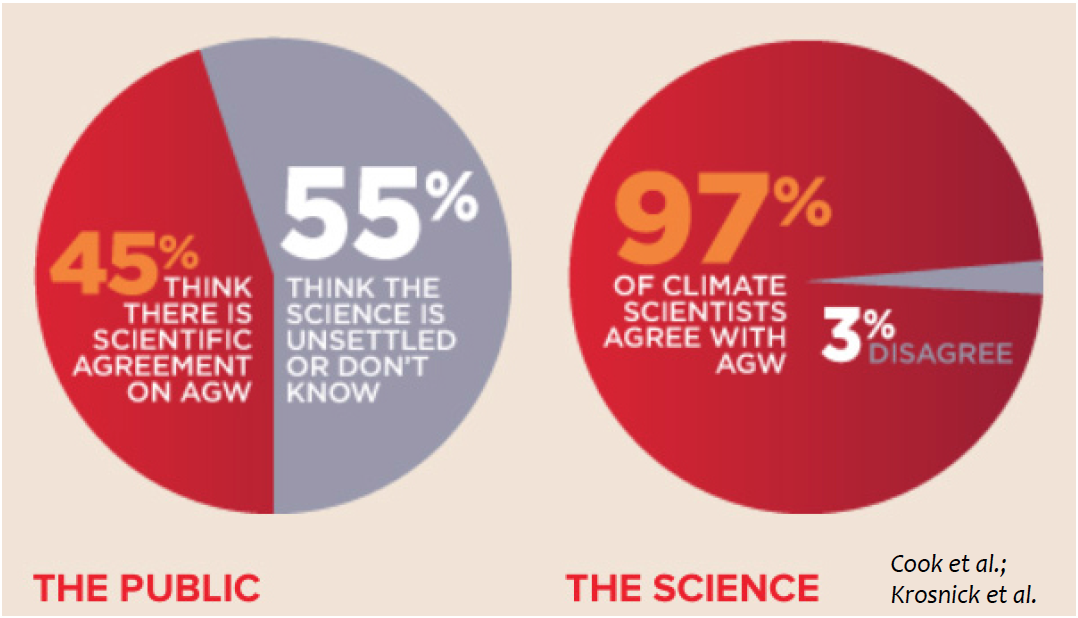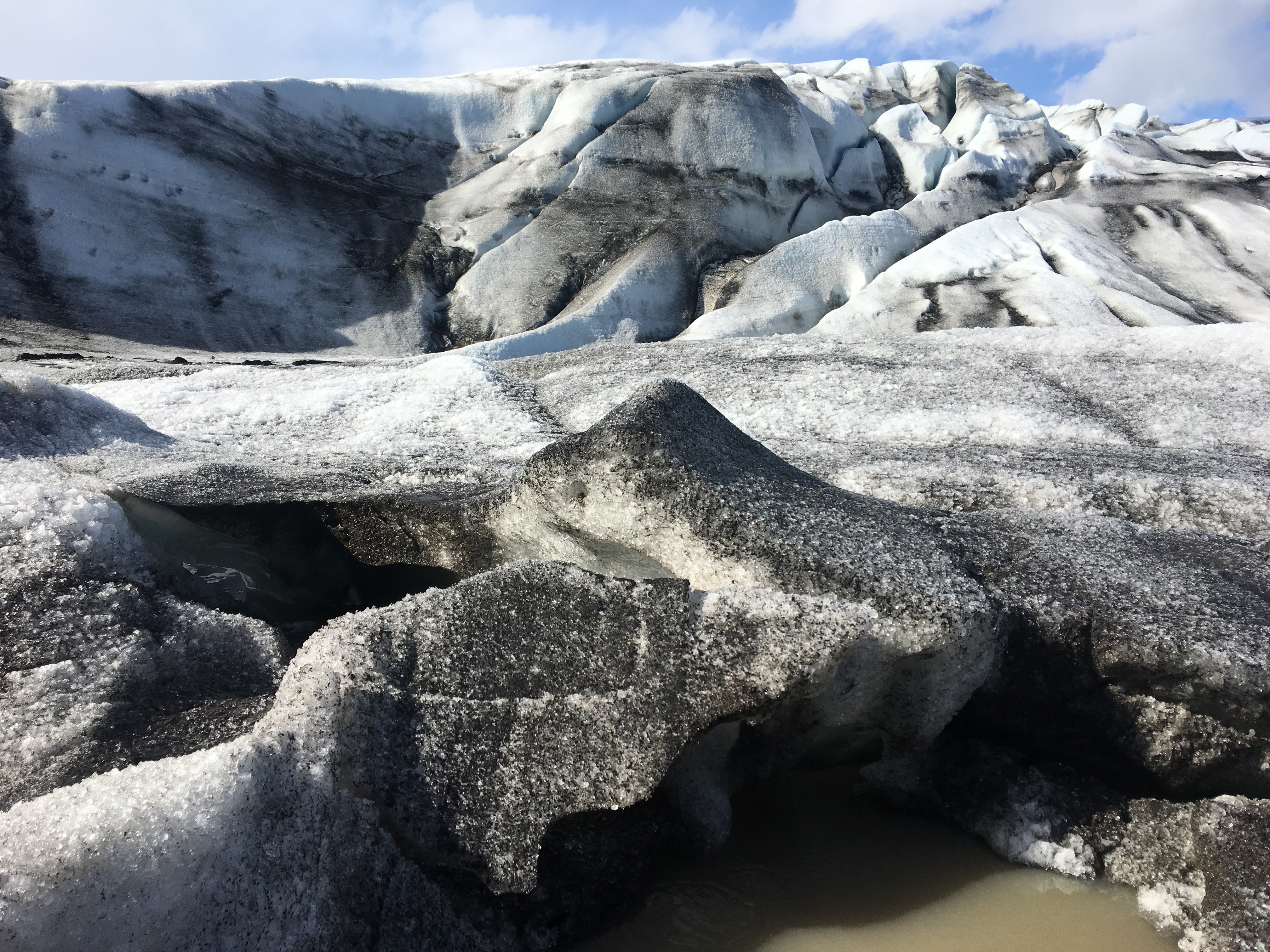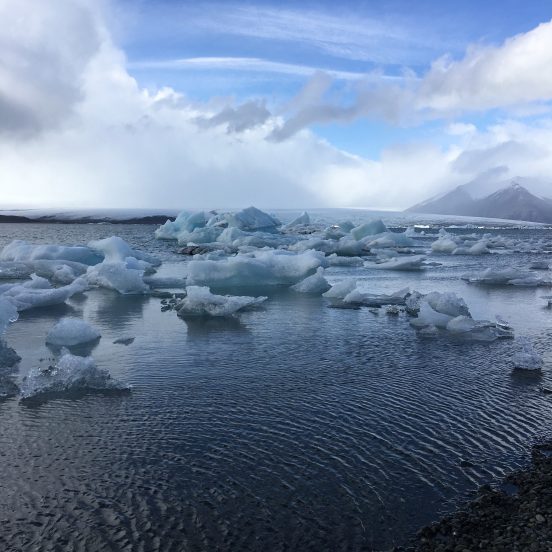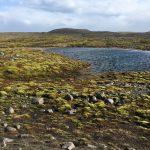As a student of geographical sciences, professors have expressed the most difficult part of their job is to communicate the severity and consequences of climate change. According to the Consensus Project, 55% of the public “think the science is unsettled or don’t know” (The Concensus Project, 2018). In Iceland, however, the changes are visible due to glacial retreat that most people are alert on the conditions. In this log entry, I will discuss the skepticism behind climate change, and how Icelandic landscapes are changing that perception.

The science is there, but skepticism still exists
The miscommunication between climate scientists and public has been a constant struggle. There are mainly three bases at the skepticism towards climate change; if the earth is warming, whether it is caused by humans, and if it is serious enough for us to act upon it. From Eva Halapi’s research in University of Akureyri, she targeted young adults in their knowledge and perception on climate change. She found that around 90% of young adults believe the earth is warming (Halapi, 2013). However, when it came to whether the cause is anthropogenic or part of a natural cycle, the results was quite split. She categorized the results based on a scale from “Don’t know” to “ entirely” for both choices. Only 53% it is mostly anthropogenic, while 67% believe it is partly caused by a natural cycle (2013). This tells us that while many young adults believe that the earth is warming, there are misconceptions as to it is happening. Moreover, it seems they worry about other parts of the world more than they worry about the effects in Iceland.
Why is it important for Iceland?
From my experience, the public who are not educated in climate science believe that global warming will affect third world countries and small island nations the most. They don’t see the detrimental effects it could bring to countries in higher latitude, which are typically more developed countries. As an educated individual in this field, I know that not only is global warming affecting the entire world, but that the effects would be more visible in higher latitudes. In the arctic circle, these effects have already started changing the landscapes of the region. Due to polar amplification, a small increase of temperature will melt the ice sheets. This decreases the reflectivity and creates a negative feedback loop that speeds up the thawing exponentially. Melting of ice sheets and glaciers can result in many different disasters such as glacial flood, isostatic rebound, and disrupting thermohaline circulation in the long run. Therefore, Iceland is just as vulnerable to the effects of climate change despite their beliefs.

This phenomenon can be understood through looking at behavioural research. According to E.U Weber, humans have two modes of analytical methods that is experience-based and description-based (Weber, 2006). As humans, we rely on our instincts and intuition to prevent dangerous situations. For example, if we smell food that has gone bad, naturally we will be repulsed from consuming it. This is a natural mechanism that protects us (2006). On the other hand, we also assess a situation by analyzing data at hand. For example, the increasing exposure that vaccinations could result in high fever for infants has led to more parents not vaccinating their children (2006). In the case of climate change, the response from climate scientists are more imminent because of their first-hand research in Pacific Islands and the Arctic regions. However, for people who do not reside in these regions, their only way of learning about climate change is through media and secondary sources.
As a nation, I believe Iceland is a leader for environment protection and sustainability. However, climate change is a global issue. Some say it is even a super wicked problem because the time available is running out and there lacks a central authority to drive action (Riedy, 2013). In today’s political state, there are often more than just skepticism that is stopping countries from making real actions. Our neighbours in USA is a great example of politics being in the way of needed action. From withdrawing of the Paris Accord and numerous public denial of climate change by President Trump, the nation is in a state of disarray. Therefore, the rising international interest of Icelandic landscapes might serve a meaningful purpose for changing people’s perception. Since glaciers are a big part of the Icelandic unique landscapes, I believe people who visit will understand the severity of climate change once they see the moraines themselves.
Bibliography
Brenan, Megan, and Lydia Saad. “Global Warming Concern Steady Despite Some Partisan Shifts.” Gallup.com. March 28, 2018. Accessed June 17, 2018. http://news.gallup.com/poll/231530/global-warming-concern-steady-despite-partisan-shifts.aspx?utm_source=newsletter&utm_medium=email&utm_campaign=newsletter_axiosgenerate&stream=top-stories.
Halapi, Eva. Climate Change – Perceptions And Knowledge Among Young Adults in Iceland. PPT. Akureyri: University of Akureyri, Center for Research and Development, RHA, August 23, 2013.
Riedy, Chris. “Climate Change Is a Super Wicked Problem – Planetcentric.” Planetcentric. May 28, 2013. Accessed June 17, 2018. https://chrisriedy.me/climate-change-is-a-super-wicked-problem-b2e2b77d947d.
“The Consensus Project.” The Consensus Project. Accessed June 17, 2018. http://theconsensusproject.com/.
Weber, Elke U. “Experience-Based and Description-Based Perceptions of Long-Term Risk: Why Global Warming Does Not Scare Us (Yet).” Climatic Change77, no. 1-2 (January 21, 2006): 103-20. doi:10.1007/s10584-006-9060-3.

